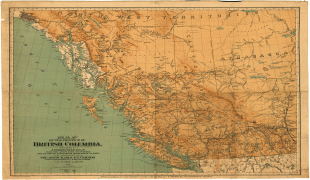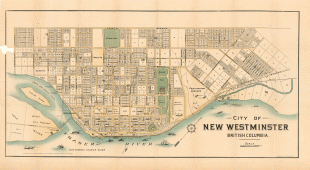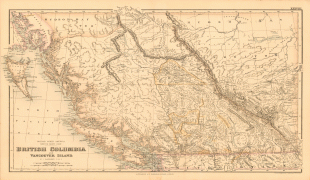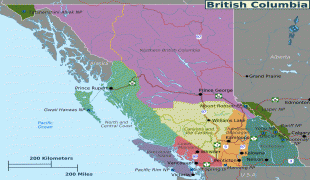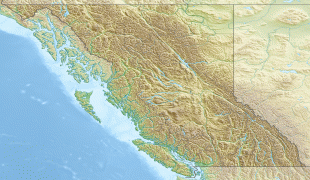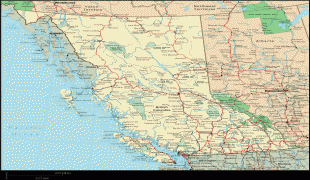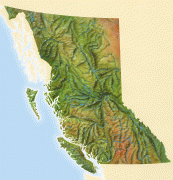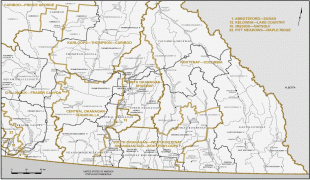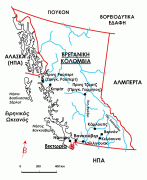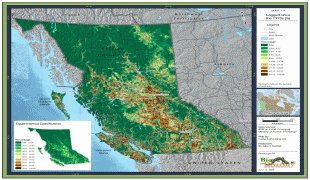British Columbia (British Columbia)
 |
 |
The first known human inhabitants of the area settled in British Columbia at least 10,000 years ago. Such groups include the Coast Salish, Tsilhqotʼin, and Haida peoples, among many others. One of the earliest British settlements in the area was Fort Victoria, established in 1843, which gave rise to the city of Victoria, the capital of the Colony of Vancouver Island. The Colony of British Columbia (1858–1866) was subsequently founded by Richard Clement Moody, and by the Royal Engineers, Columbia Detachment, in response to the Fraser Canyon Gold Rush. Moody selected the site for and founded the mainland colony's capital New Westminster. The colonies of Vancouver Island and British Columbia were incorporated in 1866, subsequent to which Victoria became the united colony's capital. In 1871, British Columbia entered Confederation as the sixth province of Canada, in enactment of the British Columbia Terms of Union.
British Columbia is a diverse and cosmopolitan province, drawing on a plethora of cultural influences from its British Canadian, European, and Asian diasporas, as well as the Indigenous population. Though the province's ethnic majority originates from the British Isles, many British Columbians also trace their ancestors to continental Europe, East Asia, and South Asia. Indigenous Canadians constitute about 6 percent of the province's total population. Christianity is the largest religion in the region. English is the common language of the province, although Punjabi, Mandarin Chinese, and Cantonese also have a large presence in the Metro Vancouver region. The Franco-Columbian community is an officially recognized linguistic minority, and around one percent of British Columbians claim French as their mother tongue. British Columbia is home to at least 34 distinct Indigenous languages.
Major sectors of British Columbia's economy include forestry, mining, filmmaking and video production, tourism, real estate, construction, wholesale, and retail. Its main exports include lumber and timber, pulp and paper products, copper, coal, and natural gas. British Columbia exhibits high property values and is a significant centre for maritime trade: the Port of Vancouver is the largest port in Canada and the most diversified port in North America. Although less than 5 percent of the province's territory is arable land, significant agriculture exists in the Fraser Valley and Okanagan due to the warmer climate. British Columbia is home to 45% of all publicly listed companies in Canada.
The province's name was chosen by Queen Victoria, when the Colony of British Columbia (1858–1866), i.e., "the Mainland", became a British colony in 1858. It refers to the Columbia District, the British name for the territory drained by the Columbia River, in southeastern British Columbia, which was the namesake of the pre-Oregon Treaty Columbia Department of the Hudson's Bay Company. Queen Victoria chose British Columbia to distinguish what was the British sector of the Columbia District from the United States ("American Columbia" or "Southern Columbia"), which became the Oregon Territory on August 8, 1848, as a result of the treaty.
Ultimately, the Columbia in the name British Columbia is derived from the name of the Columbia Rediviva, an American ship which lent its name to the Columbia River and later the wider region; the Columbia in the name Columbia Rediviva came from the name Columbia for the New World or parts thereof, a reference to Christopher Columbus.
The governments of Canada and British Columbia recognize Colombie-Britannique as the French name for the province. However, as of 2016, French language is spoken by a small minority of BC residents (1.4 percent).
Map - British Columbia (British Columbia)
Map
Country - Canada
 |
 |
| Flag of Canada | |
Indigenous peoples have continuously inhabited what is now Canada for thousands of years. Beginning in the 16th century, British and French expeditions explored and later settled along the Atlantic coast. As a consequence of various armed conflicts, France ceded nearly all of its colonies in North America in 1763. In 1867, with the union of three British North American colonies through Confederation, Canada was formed as a federal dominion of four provinces. This began an accretion of provinces and territories and a process of increasing autonomy from the United Kingdom. This widening autonomy was highlighted by the Statute of Westminster 1931 and culminated in the Canada Act 1982, which severed the vestiges of legal dependence on the Parliament of the United Kingdom.
Currency / Language
| ISO | Currency | Symbol | Significant figures |
|---|---|---|---|
| CAD | Canadian dollar | $ | 2 |
| ISO | Language |
|---|---|
| EN | English language |
| FR | French language |
| IU | Inuktitut |






